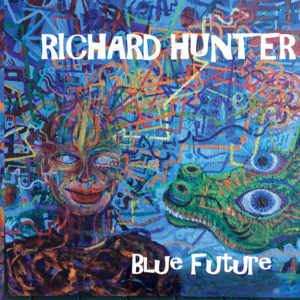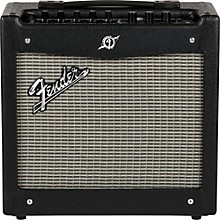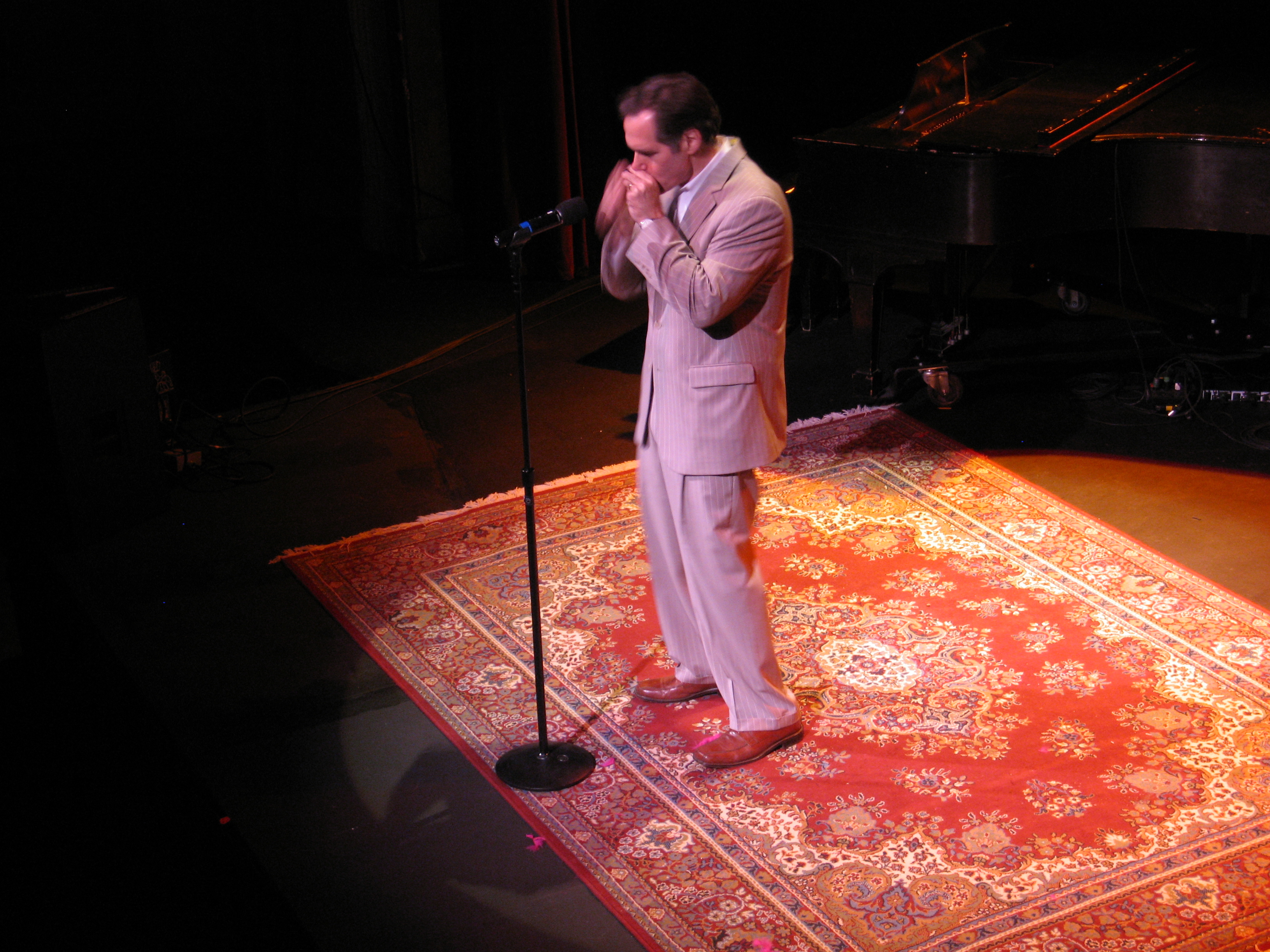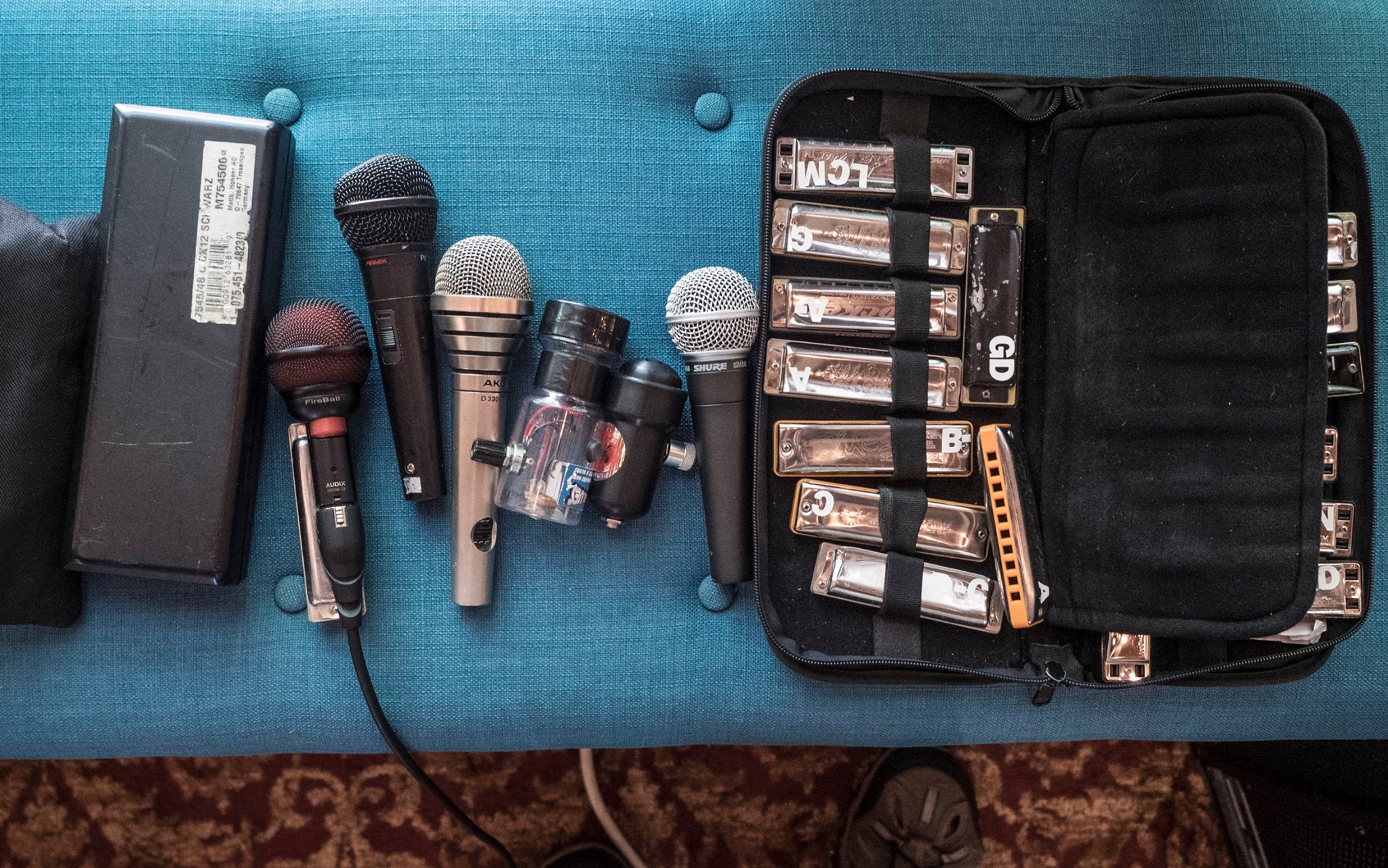
Recording “Beautiful at Night” with the Mustang III
About a month ago Edward Abbiatti, leader of the Lowlands Band (whose last gig I unfortunately missed in April) asked me if I’d like to play on a track called “Beautiful, At Night” from his next record (which I think not coincidentally is called “Beautiful, at Night”). He described the track to me as punkish. I love noise, and punk is noisy, and I looked forward to recording this one.
The track is a medium-tempo rocker with a big bed of blurry distorted lowish guitar. I love that sound, and it’s great for harmonica, because an amped harp sails right across the top of that sound. There was no question in my mind that I would use a big, crunchy (if not crusty) traditional amped-up sound for this piece, and that meant the Fender Mustang III, my new favorite amp for that stuff.
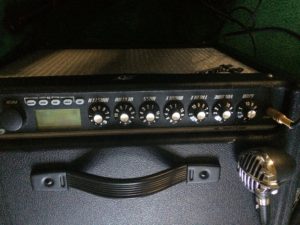
While I’ve been working on the harp overdubs for “Blue Future,” my upcoming blues record, I’ve been tuning up the patches from my patch set for Fender Mustang for specific songs, and saving those patches (of course) for future use. One of those patches is a hotted-up Silvertone amp model-based setup with no FX (not even delay and reverb) that just screams, and that’s what I used for this song. I played the harp into a Shure SM58 for a nice crunchy blues tone. That was the entire harp chain for this song.
One of the things I’ve discovered is that when you record from the Mustang’s XLR outs, you can turn up the amp volume on whatever amp model you’re using to levels that would have a real cabinet shaking and popping the speaker cone out into the audience. That’s a good way to get the sound of an amp driven hard. It’s a technique you can use on a Digitech RP, a Zoom G3, a Fender Mustang, or any other amp or amp modeling pedal that either doesn’t have a builtin speaker or can (safely) bypass it to go straight to the board to get really big while avoiding feedback. (You don’t get feedback if there’s no speaker to overwhelm your mic.) That sound is terrifically powerful and responsive, and it’s exactly right for something that has to grind (like punk, for example).
Ed emailed me an mp3 of the track and I loaded it into a new project in Sonar X3 on my Studiocat Pro laptop. I plugged the XLR outs of the Mustang into the inputs of my Focusrite Scarlett 2i2 interface and set the levels to peak at a little under 0dB. I set up a few blank audio tracks in Sonar and set the ins and outs. I ran the guide track a few times to figure out the chord structure and tried a few ideas while monitoring over headphones.
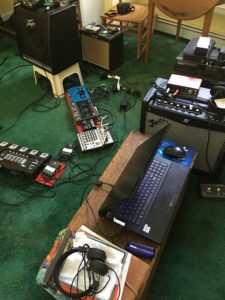
The piece begins in an e minor dorian mode, and I tried a 5th position approach on a C harp first, which wasn’t bad, even on the transition to D major for the choruses. But when the verses are in e minor and the choruses are in D, the obvious thing to try first is a D harp in 3rd position for the verses and 1st position for the choruses. “Obvious” because 1) all the pitches in the D harp work without alteration in e minor and D, 2) there are lots of expressive and harmonically relevant bends, 3) there are lots of sonorous chord voicings available in a wide range for both e minor and D major triads and partials, and 4) a D harp puts out a lot of high-powered screech in exactly the places you want it when you’re surrounded by low-pitched, blurry, distorted guitar tones. (It’s like being a screechy high-voiced singer in a metal band.) In other words, a D harp goes a long way to doing the job on this song all by itself. I pulled out my Seydel 1847 in D and started recording.
The process I used to construct my part was different from my usual approach, and I thoroughly enjoyed it. I started by just improvising some ideas, mostly various riffs, on a D harp while the song played. I soon found myself playing a melody of long, emotionally charged notes over the pre-verse sections, with shorter notes to punctuate the lyrics on the verses, and a big octave line on the choruses. I tried a partial take or two to see whether the various parts worked, listened back, and made some adjustments. It was clear immediately that the sound of the harp through the Mustang was working fine with the guitars. When I liked the parts, I played a complete take, then listened to it back and punched in corrections on the few pieces that needed them. I also redid the solo once or twice until I was satisfied with it.
With a solid take in the bag, I decided to try something similar on a Special 20 low D harp, and I really liked the tough horn sound it produced. (I had to take the covers off to adjust the reed gap on the blow 2 reed, because it wasn’t speaking so well. That’s the kind of thing you can do in a home studio; in a commercial studio, you’d either be pissing off a room full of musicians and techs, or you’d be fretting about the money you’re burning up with every second spent adjusting that harp, or both.) The low D was too deep into the sonic zone occupied by the big guitars to cut through on its own, but when I played the D harp and low D harp tracks together, they sounded huge. At that point I began thinking about the low D and D harp tracks as complementary, and I re-recorded the low D harp track specifically to make it work better with the D harp track. The last step was to punch in a few corrections on the low D track.
Recording both tracks from start to finish took about an hour and a half. When it was all done, the harps had traditional Chicago blues wail and punch, and the two harps separated by an octave produced depth you never heard in Chicago blues. (The Chicago blues legends never had low D harps to play with, although it’s not unusual now to hear one in the hands of a modern blues player like Dennis Gruenling.) It’s punkish in a weird, wailing way, and I love it. Fortunately, Ed does too, so it’s going on the record. Stay tuned for more news of this release.
If you liked that, you’ll like these:
the 21st century blues harmonica manifesto in sound
Get it on Amazon
Get it on iTunes
the rock harmonica masterpiece
Get it on Amazon
Get it on iTunes
Tags In
Related Posts
Leave a Reply
You must be logged in to post a comment.
WHAT’S NEW
Categories
- Audio/Video
- Blog
- Blue Future
- Digitech RP Tricks and Tips
- Discography, CDs, Projects, Info, Notes
- Featured Video
- For the Beginner
- Gallery
- Hunter's Effects
- Hunter's Music
- Huntersounds for Fender Mustang
- Meet the Pros
- More Video
- MPH: Maw/Preston/Hunter
- My Three Big Contributions
- Player's Resources
- Pro Tips & Techniques
- Recommended Artists & Recordings
- Recommended Gear
- Recorded Performances
- Reviews, Interviews, Testimonials
- The Lucky One
- Uncategorized
- Upcoming Performances
- Zoom G3 Tips and Tricks
